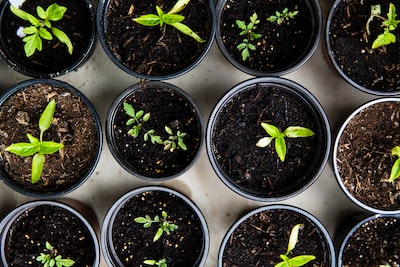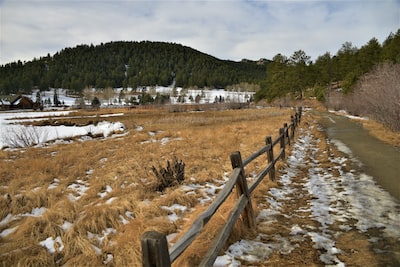In many ways, the propagation of shrubs is like the growth of a family tree. It starts with a seed, or perhaps a cutting, and evolves over time into a complex and varied landscape of bushy foliage.
Yet the process of cultivating and nurturing these woody perennials is not as straightforward as it may seem. There are myriad factors that can impact the success of a shrub’s propagation, from soil composition to watering schedules, sunlight exposure to pruning techniques.
And let’s not forget the many different types of shrubs out there, each with their own unique needs and personalities. Some may be hardy and resilient, able to thrive in just about any setting.
Others may be delicate and finicky, requiring just the right amount of TLC to take root and flourish. But regardless of the specific type of shrub you’re working with, one thing is certain: the process of propagation is both an art and a science, one that requires patience, persistence, and a willingness to experiment and learn as you go.
You know what they say, ”April showers bring May flowers,” but what about the rest of the year? How can you keep your garden looking lush and vibrant all year long? Well, my friends, the answer lies in a little thing called ”shrubbing.” Yes, you heard that right, shrubbing.
It may sound like some new dance craze straight out of TikTok, but trust me, it’s a gardening technique that’s been around for centuries. And with society’s recent obsession with all things green and sustainable, it’s no wonder shrubbing has made its way back into the pop culture scene.
But what exactly is shrubbing, you ask? Essentially, it’s the process of strategically planting shrubs and small trees throughout your garden to create a more visually appealing landscape. Think of it like contouring for your yard.
By using various types of shrubs, you can create depth and texture, adding dimension where there was once only flat, uninspired grass.Now, before you go running to your local nursery, it’s important to understand that not all shrubs are created equal.
There are a variety of species to choose from, each with their own unique characteristics and maintenance requirements. Some popular options include boxwood, hydrangea, and forsythia.
But don’t just take my word for it, do your research and find the perfect type for your needs.One mistake many novice shrubbers make is overcrowding their garden with too many plants, creating a chaotic and overwhelming environment.
Remember, less is more. Take your time and plan out the placement of your shrubs carefully.
Think of it like creating a work of art – you want your garden to be eye-catching and memorable, not cluttered and confusing.In the end, shrubbing is not just a technique, it’s a lifestyle.
It’s about taking the time to nurture and cultivate a space that brings you joy and tranquility. So, grab your gardening gloves and get to work.
Your garden (and your soul) will thank you for it.
Table of Contents
1. Introduction: Welcome to the Garden Revolution
Welcome to the Garden Revolution! As spring arrives, we are reminded of the beauty and serenity of nature. For some, gardens are a source of pride, joy, and escape from the hustle and bustle of daily life.
However, gardening can be daunting for others, and they may be unsure where to start. Fear not! Our guide, ”Shrubbing Up Your Garden,” will show you how to create a lush paradise in your outdoor space.
Whether you’re a pro or a novice, our guide will give you the knowledge and tools to build a beautiful and sustainable garden. It all starts with compost – the lifeblood of any healthy garden.
So roll up your sleeves and get ready to dig in and discover the joys of gardening.
2. The Pop Culture Connection
Gardening requires a lot of equipment such as pruning shears, gardening gloves, trowels, and watering cans. But did you know that gardening and pop culture are connected? ”The Secret Garden” book was popular over a century ago and has recently been adapted into a movie, renewing interest in gardening.
Many popular TV shows and movies also feature gardening prominently. Music is also influenced by gardening, from John Denver’s ”Garden Song” to Zack de la Rocha’s ”Digging for Windows.
” So don’t be intimidated by the equipment, get inspired by pop culture and start gardening.
3. The Benefits of Shrubs
Watching the sun rise and emit warm rays in your garden can bring you a sense of bliss. However, you may feel like something is missing.
Ah, shrubs! These plants can give your outdoor area a new level of depth and beauty. They are also a boon for the environment and are known as the ”unsung heroes” of the plant world.
Shrubs provide shelter, food, and protection for wildlife and aid in improving air quality while decreasing carbon in the atmosphere. It might surprise you, but shrubs have a place in pop culture.
Elizabeth Taylor loved lavender, and shrubs have been referenced in the song ”Summer Nights” in the movie Grease. Supplementing your outdoor space with these plants can enhance your garden, help the environment, or let you express your inner pop culture enthusiast.
Don’t just take our word for it; try it out for yourself!
4. Choosing the Right Shrubs
Choosing the right shrubs for your garden requires careful consideration of various factors, including time, climate, and maintenance needs. Shrubs are long-term investments that can add lasting aesthetic appeal to your outdoor space, so it’s crucial to choose varieties that will thrive for years to come.
Landscapers may use propaganda to influence popularity, but it’s essential to look beyond temporary trends and consider the shrub’s specific requirements, such as sunlight, soil, watering, and pruning. Low-maintenance options include dwarf Korean lilacs, boxwoods, and spireas, while butterfly bushes and rhododendrons attract pollinators.
Consider the climate in your region, as extreme temperatures or high humidity may hinder some shrubs’ survival. Do your research and invest in shrubs that will stand the test of time.
5. Preparing the Garden
Gardening is popular again, as people appreciate growing their own food and connecting with nature. Whether you’re planting herbs in a window box or creating a vegetable garden, success comes from preparation.
Assess your soil, gather the right tools, and plan your garden. Though it can be daunting for beginners, resources are abundant – from gardening blogs to social media influencers.
However, be careful: not all advice is equal. Some sources may promote certain products over your garden’s health.
Research well and take advice with a grain of salt. Preparation and guidance lead to a bountiful harvest.
6. Planting Techniques
Looking to boost your gardening skills? Rather than sticking to traditional approaches revolving around composting and fertilizing, why not look to pop culture and propaganda for inspiration? By drawing on sources like movies, TV shows, and ad campaigns, you can add a new dimension to your planting techniques. Let’s take a look at a few examples to get started.
First up, there’s ”The Lorax.” This Dr.
Seuss classic urges readers to take care of the environment and fight against corporate greed. While the message may be a bit heavy-handed, there’s an important lesson here for gardeners: it pays to use sustainable, eco-friendly practices.
For instance, skip the harsh chemical fertilizers and opt for organic alternatives instead.Another source of inspiration is the ”Keep Calm and Carry On” poster.
Though it originated as a wartime propaganda piece, the message of resilience and perseverance remains just as relevant today. Apply this same mindset to your gardening efforts, showing the patience and persistence necessary for success.
Finally, take a cue from the ”Got Milk?” campaign. Although it may seem a bit off-topic, the message of nourishment and sustenance is key to a healthy garden.
Make sure you’re preparing your soil correctly and supplying the right nutrients to help your plants grow strong.When it comes to planting, the possibilities for creativity and exploration are endless.
By looking beyond the standard advice and turning to diverse sources of inspiration, you can elevate your gardening game and see where your imagination takes you!
7. Caring for Your Shrubs
Are you dissatisfied with your garden? Do you feel like something is missing or are you constantly fighting weeds? Fret not! Caring for your shrubs has become more accessible with the rise of social media and gardening influencers. There are numerous tips and tricks to help your greenery thrive, and you don’t even need a green thumb to create a stunning garden.
One sought-after technique is ”shrubbing up,” where shrubs are strategically planted throughout the garden to add depth, dimension, privacy, or conceal unsightly areas. This method’s popularity has grown due to appearances in popular TV shows and movies like ”Fixer Upper” and ”The Secret Garden,” adding Hollywood glamour to any garden.
Get ready to transform your garden into an oasis with the newest gardening techniques, a little movie magic, and your gardening gloves.
8. Styling and Design
Looking for inspiration to jazz up your garden? Pop culture can provide some great design ideas! Shows like Game of Thrones have inspired medieval-style gardens, while Stranger Things has sparked a resurgence of 80s decor. Minimalism and sustainability are also on the rise, leading many gardeners to embrace naturalistic designs with eco-friendly features.
But don’t forget that functionality is key. A garden should be a place of relaxation and reflection, tailored to your unique tastes and interests.
So, whether you’re a pop culture fan or a nature lover, let your creativity soar and make your garden a stylish and functional oasis!
9. Common Mistakes to Avoid
Gardening requires patience, diligence, and know-how. With the abundance of information available online, it’s easy to get lost.
Here are a few common mistakes to avoid for a successful garden.First, tend to your soil.
It needs to be fertile and healthy to support plant growth. You can purchase quality soil or amend your existing soil with organic matter.
Second, avoid overwatering. Plants need time to dry out between watering sessions to prevent root rot and other problems.
Third, choose plants suited to your climate and sun exposure.Lastly, maintenance is key.
Regular pruning, weeding, and pest control keep your garden healthy and looking great. Whether you’re experienced or new to gardening, remember these tips.
Your garden will thrive.
10. Troubleshooting Issues
Gardening has its joys but also its difficulties. Pests, diseases, and soil quality issues can be perplexing, but solutions can always be found.
Troubleshooting garden issues is crucial for a thriving green space. Boosting shrub health is a common challenge for gardeners.
To find inspiration for this, turn to propaganda guides steeped in pop culture. These guides offer entertaining yet effective techniques and tips for battling pests and improving soil quality.
With titles like ”Gardening with Game of Thrones” and ”The Walking Dead’s Guide to Pest Control,” there is a wealth of information to explore. Don’t be afraid to get dirty and dive into the world of shrubbing up your garden.
The rewards are well worth the effort, and you may find it fun too.
11. Success Stories and Inspiration
When gardening, inspiration and success stories are essential. With the numerous tasks that come with nurturing a garden, it’s effortless to feel overwhelmed.
If you’re not a green thumb, you might consider giving up on your garden altogether. However, don’t lose hope! You can derive inspiration from various sources, such as social media and popular TV shows.
One trend that inspires gardeners is using shrubs – low-maintenance plants. By incorporating shrubs, you can enjoy a beautiful garden with minimal fuss.
Shrubs come in different shapes, sizes, and colors, enabling you to find the perfect fit for your space. Moreover, you can explore other gardening trends, such as creating a ”garden room” or adding edible plants to your landscape.
Gardening also provides social benefits, such as joining gardening clubs or communities to learn tips and techniques and meet fellow enthusiasts. Gardening is a journey, and it’s imperative to experiment and try new things to find what works best for your space.
Be open to new approaches, and you might experience the overwhelming joy of beautiful results.
The Power of Null: Analyzing Environmental Factors for Optimal Shrub Propagation
Null. It sounds like nothing, a void, a blank space. But in the world of data analysis and statistical modeling, null holds great power.
It represents the absence of a relationship between two variables. And in the propagation of shrubs, null can provide valuable insights and solutions.
Shrubs, like any living organism, need a suitable environment to grow and flourish. This includes factors such as soil quality, light exposure, and moisture levels.
However, simply providing these elements does not necessarily guarantee successful growth. Certain factors may interact in unexpected ways, leading to stunted growth or even death.
This is where null can help. By analyzing the relationships between various environmental factors, we can identify which ones are most important for optimal shrub propagation.
For example, using a null hypothesis test, we can determine if there is a significant relationship between soil pH and shrub growth. If there is no significant relationship, then soil pH may not be as important a factor as previously thought.
On the other hand, if there is a significant relationship, then it may be necessary to adjust soil pH levels for optimal growth.In addition, null can help us identify which factors may be interacting in unexpected ways.
For example, perhaps high levels of sunlight are beneficial for shrubs in some cases, but harmful in others, depending on the moisture levels of the soil. By analyzing the relationships between multiple variables, we can better predict which combinations are most likely to promote successful shrub propagation.
Overall, null may seem like a simple concept, but its power to help solve complex problems should not be underestimated. By using null hypothesis tests and other statistical modeling techniques, we can gain valuable insights into the factors that influence shrub propagation and create better environments for growth.
In Summary
In conclusion, the propagation of shrubs is a fascinating and intricate process that both amateur and professional gardeners can enjoy. From stem cuttings to layering, the methods of duplicating shrubs are varied and nuanced.
The complexity of root development and environmental factors can affect the success of propagation, creating a sense of unpredictability that keeps gardeners on their toes. Yet, the satisfaction of successfully propagating a shrub and watching it grow into a beautiful plant can be incredibly rewarding.
It’s clear that the propagation of shrubs is an important aspect of horticulture, one that holds a wealth of knowledge and discovery for those willing to experiment and learn. So, the next time you’re looking to add some greenery to your garden, consider trying your hand at propagating a shrub.
Who knows, you just might end up with a new favorite plant to call your own.







